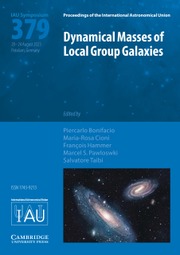Article contents
The role of mass loss in chemodynamical evolution of galaxies
Published online by Cambridge University Press: 30 November 2022
Abstract
Thanks to the long-term collaborations between nuclear and astrophysics, we have good understanding on the origin of elements in the universe, except for the elements around Ti and some neutron-capture elements. From the comparison between observations of nearby stars and Galactic chemical evolution models, a rapid neutron-capture process associated with core-collapse supernovae is required. The production of C, N, F and some minor isotopes depends on the rotation of massive stars, and the observations of distant galaxies with ALMA indicate rapid cosmic enrichment. It might be hard to find very metal-poor or Population III (and dust-free) galaxies at very high redshifts even with JWST.
- Type
- Contributed Paper
- Information
- Proceedings of the International Astronomical Union , Volume 16 , Symposium S366: The Origin of Outflows in Evolved Stars , November 2020 , pp. 63 - 82
- Creative Commons
- This is an Open Access article, distributed under the terms of the Creative Commons Attribution licence (https://creativecommons.org/licenses/by/4.0/), which permits unrestricted re-use, distribution, and reproduction in any medium, provided the original work is properly cited.
- Copyright
- © The Author(s), 2022. Published by Cambridge University Press on behalf of International Astronomical Union
References
- 3
- Cited by



